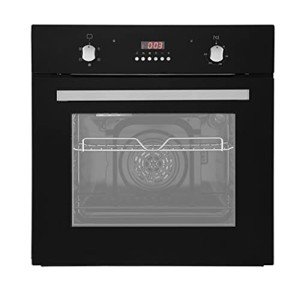Understanding Ovens And Hobs -In Range: A Deep Dive Into One of the Most Versatile Programming Features
The built-in function range() is among the most frequently used functions in programs, particularly in Python. Its simpleness and versatility make it an essential tool for developers, engineers, and information scientists alike. In this short article, we will check out the basic elements of the built-in range function, its syntax, use cases, and some useful examples to assist you leverage its power in your coding undertakings.
What is the Built-In Range?
In Python, the range() function produces a sequence of numbers. It is frequently used for model, particularly within loops, allowing developers to perform a block of code a particular variety of times without by hand defining each model.
Syntax of the Range Function
The range() function can take one, 2, or 3 arguments, and its fundamental syntax is as follows:
range( start, stop, action).
start: The starting point of the sequence (inclusive). If left out, it defaults to 0.
stop: The endpoint of the sequence (exclusive). This argument is required.
step: The difference in between each number in the series. If left out, it defaults to 1.
Examples of Using Range.
Standard Usage: Using range() in a basic for loop to print numbers from 0 to 4:.
for i in range( 5 ):.
print( i).
Output:.
0
1.
2.
3.
4.
Specifying a Start and Stop: You can define both a starting point and an endpoint:.
for i in range( 2, 6):.
print( i).
Output:.
2.
3.
4.
5.
Using a Step Value: The step criterion permits you to control the increments:.
for i in range( 0, 10, 2):.
print( i).
Output:.
0
2.
4.
6.
8.
Counting Backwards: The action can also be negative, enabling counting down:.
for i in range( 5, 0, -1):.
print( i).
Output:.
5.
4.
3.
2.
1.
Practical Applications.
Repeating Over Lists: While using range() prevails in for loops, it can also be useful for repeating over the indices of a list.
fruits = [' apple', 'banana', 'cherry'] for i in range( len( fruits)):.
print( f" i: fruits [i] ").
Output:.
0: apple.
1: banana.
2: cherry.
Creating Number Sequences: The function is helpful for producing sequences of numbers, which you might need for algorithms or data control.
number_list = list( range( 10, 21)).
print( number_list).
Output:.
[10, 11, 12, 13, 14, 15, 16, 17, 18, 19, 20] List Comprehensions: range() works magnificently with list understandings for more condensed expressions.
squares = [x ** 2 for x in range( 5)] print( squares).
Output:.

[0, 1, 4, 9, 16] Conclusion.
The built-in range function is a fundamental feature in Python that offers a simple way to create series of numbers, which can be used for a range of shows tasks. Whether you are working on loops, creating lists, or executing algorithms, comprehending how to use range() is essential for reliable Python coding. As you continue to explore the language, you'll unquestionably discover brand-new ways to leverage this effective tool, making your programming jobs more efficient and streamlined.
